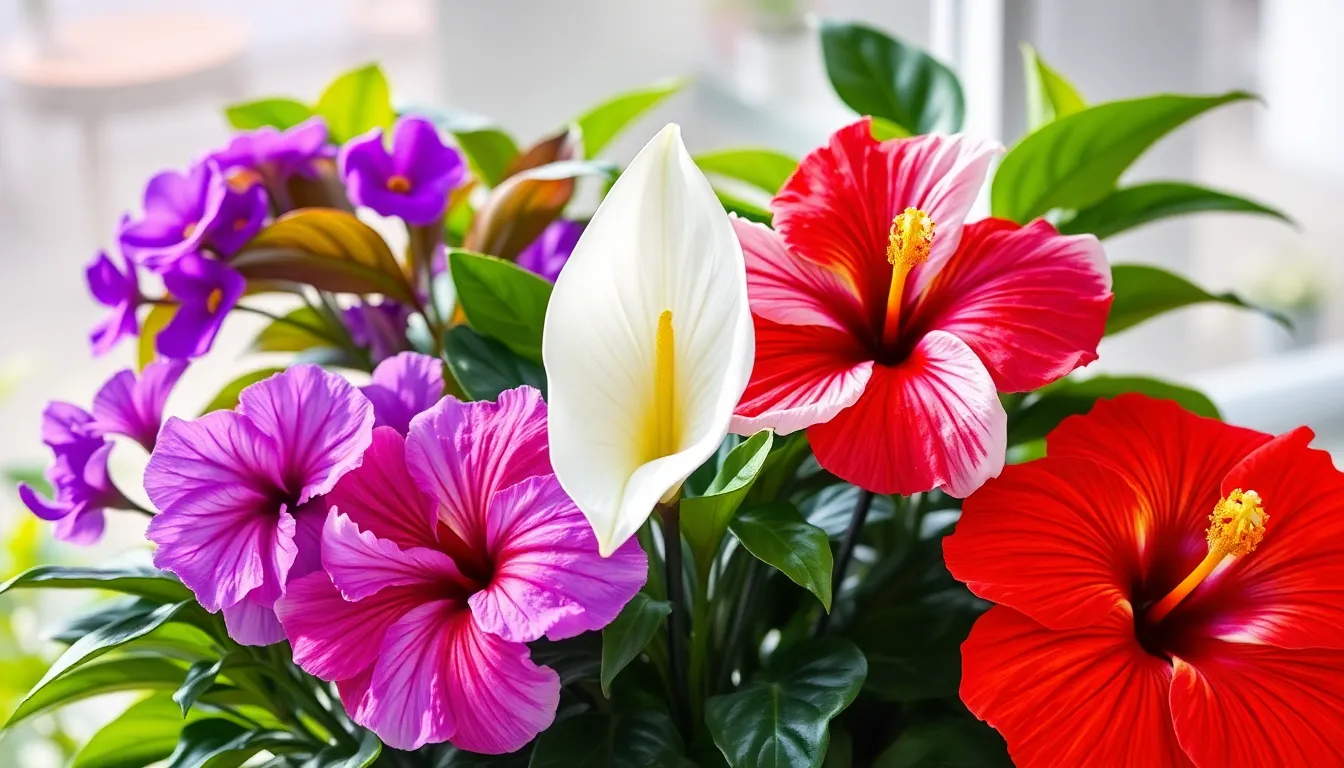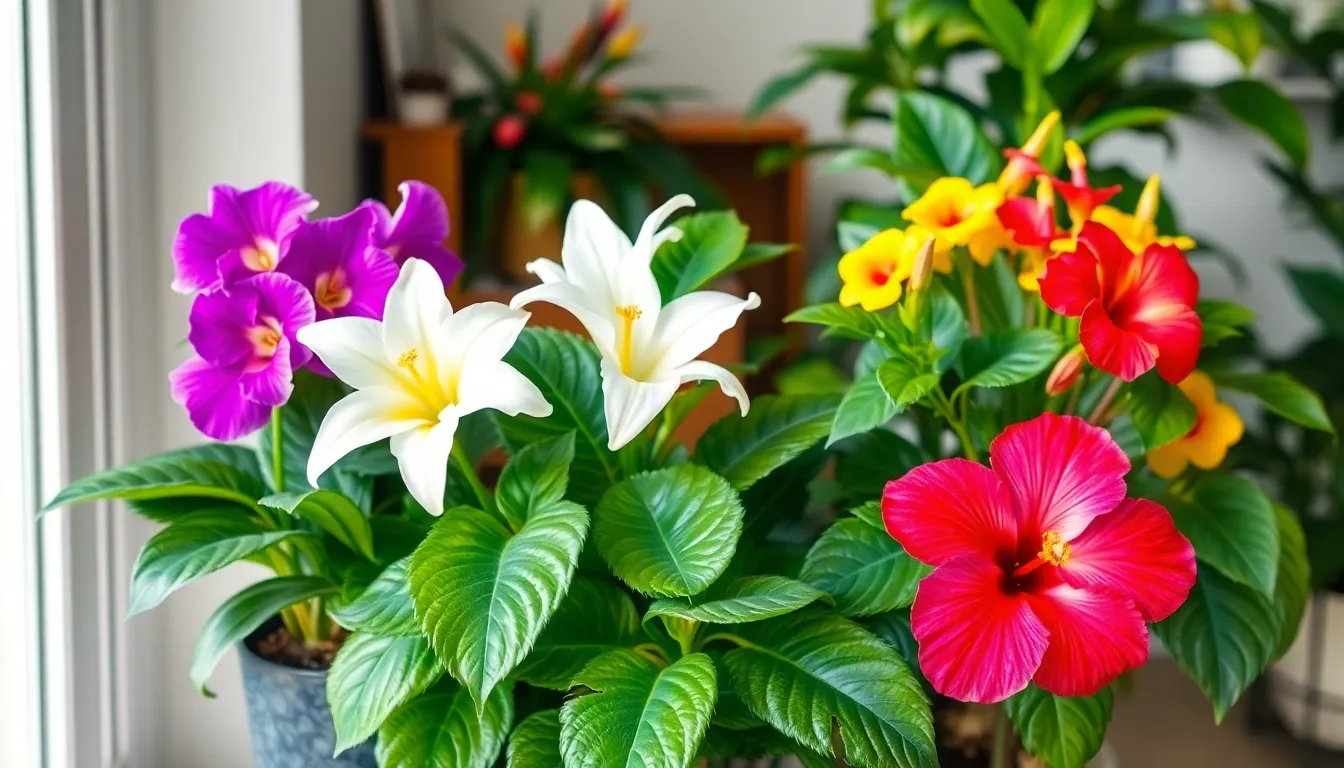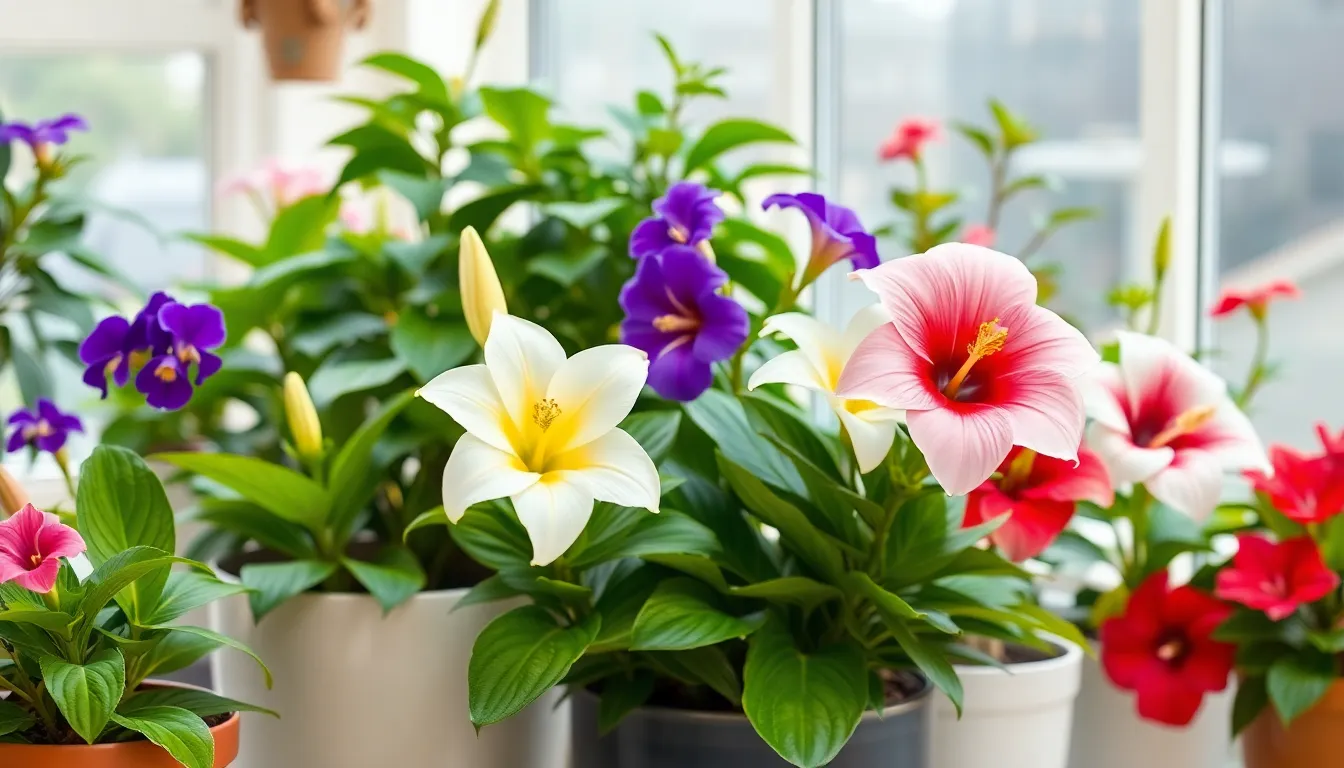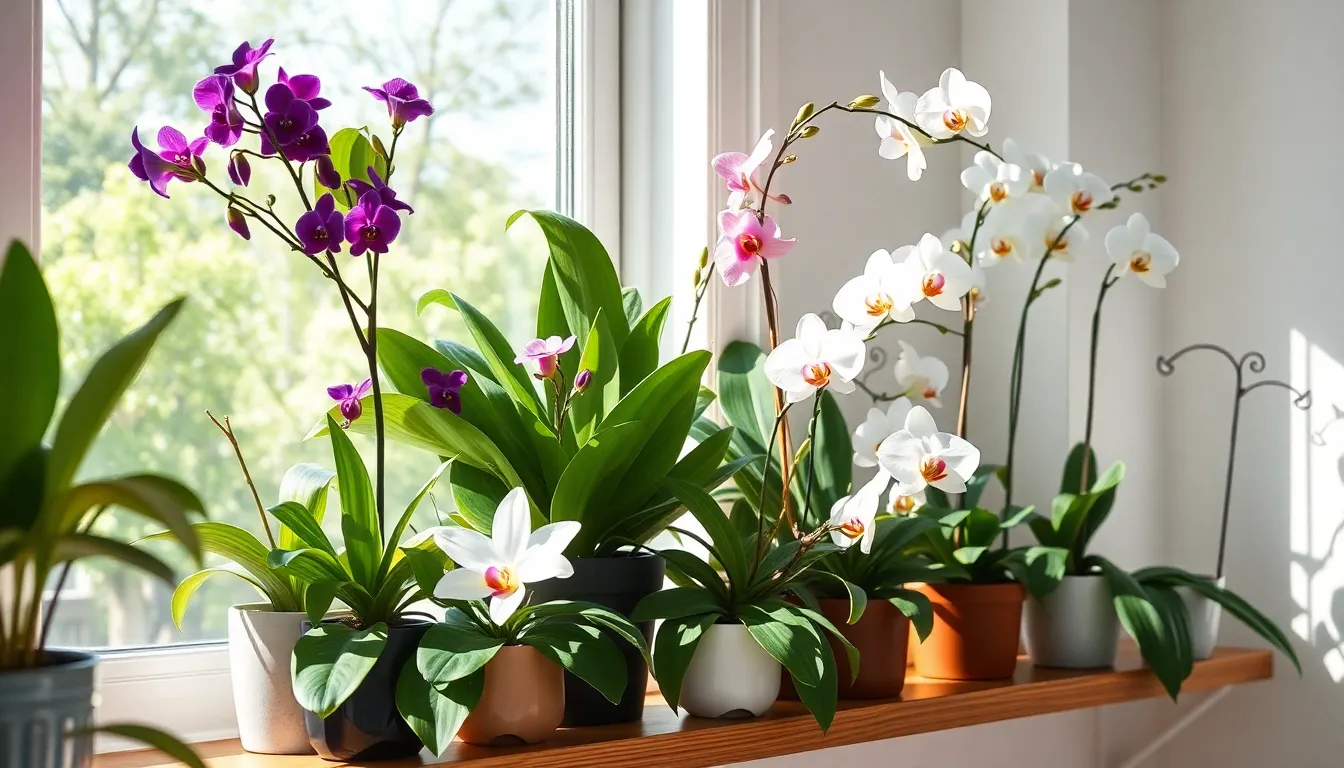Imagine transforming your home into a vibrant oasis with just a touch of green and a splash of color. Flowering houseplants aren’t just pretty faces; they’re nature’s way of reminding us that life can be beautiful—even when we’re stuck inside binge-watching our favorite shows. With these botanical beauties, every corner of your home can bloom with personality and charm.
Not only do flowering houseplants brighten up dull spaces, but they also come with a host of benefits. They purify the air, boost your mood, and even make for great conversation starters—because who doesn’t want to discuss the merits of a well-timed orchid bloom? Dive into the world of flowering houseplants and discover how easy it is to bring a little joy and a lot of color into your life.
Flowering Houseplants
Flowering houseplants offer numerous advantages that contribute to both health and home beauty. Their presence enhances living spaces while providing essential benefits.
Improved Air Quality
Flowering houseplants excel in improving indoor air quality. Various species, like peace lilies and snake plants, filter toxins and release oxygen. Research by NASA demonstrates that certain plants can eliminate common pollutants, such as formaldehyde and benzene, improving overall air purity. Having these plants indoors can lead to reduced headaches and fatigue, enhancing daily comfort. Cleaner air promotes better respiratory health for everyone in the home.
Enhanced Aesthetic Appeal
Flowering houseplants significantly enhance the aesthetic appeal of any room. Vivid blooms and lush foliage attract attention, establishing a focal point in decor. These plants add color and texture, creating a more inviting atmosphere. Each flower variety offers a unique style, from tropical orchids to cheerful African violets, allowing for diverse decorating options. Homeowners find that integrating flowering plants can reflect personal taste and elevate the overall ambiance of their living spaces.
Popular Types Of Flowering Houseplants

Flowering houseplants bring vibrant colors and enrich living spaces. Here are some popular options that thrive indoors.
African Violets
African violets thrive in moderate to bright indirect light. They feature lovely, velvety leaves and produce clusters of blooms in shades of purple, blue, and white. Maintenance involves keeping the soil consistently moist but not soggy. These plants prefer a humidity level of around 50 to 60 percent. Fertilizing every few weeks during the growing season enhances their flowering potential. Additionally, they can bloom throughout the year with proper care, making them a popular choice.
Peace Lilies
Peace lilies stand out with their elegant white flowers and dark green leaves. These plants thrive in low to moderate light conditions, requiring minimal sunlight. They prefer consistently moist soil but should not be overwatered. Peace lilies also help purify the air by filtering out harmful toxins. This makes them beneficial additions to homes and offices. Fertilizing once every six to eight weeks during the growing season encourages more blooms and healthier foliage.
Hibiscus

Hibiscus flowers bring a tropical feel to any indoor space. They bloom in various colors, including red, yellow, and pink. Providing plenty of light encourages vibrant blooms, while regular watering keeps the soil moist but not waterlogged. Hibiscus prefers a warm environment with temperatures above 60°F. Fertilizing every two to four weeks during the growing season promotes extensive flowering. These plants often make striking focal points due to their large, showy flowers.
Care Tips For Flowering Houseplants
Caring for flowering houseplants requires attention to light, water, and nutrients. Each element plays a vital role in maintaining healthy plants and encouraging blooms.
Light Requirements
Different flowering houseplants have unique light needs. African Violets thrive in moderate to bright indirect light, while Peace Lilies prefer low to moderate light for optimal growth. Hibiscus flourishes with ample sunlight, needing at least six hours daily. Assessing the light availability in each room helps in placing the plants appropriately. Bright spots near windows are ideal for species that require more light. Adjust locations as necessary to ensure plants receive the right amount throughout the year.
Watering Techniques

Watering techniques vary among flowering houseplants. Consistency in moisture is crucial for African Violets, with soil kept slightly damp but never soggy. Peace Lilies tolerate drying out, so water them when the top inch of soil feels dry. Thorough watering is best for Hibiscus, allowing water to drain from the bottom of the pot. Use room-temperature water to avoid shocking the plant’s roots. Overwatering can lead to root rot, so it’s vital to find the right balance for each species.
Fertilizing Method
Fertilizing methods contribute significantly to plant health. Application of a balanced, water-soluble fertilizer every four to six weeks encourages blooming in African Violets and Hibiscus. Peace Lilies benefit from a diluted fertilizer every two months during the growing season. Avoid fertilizing during dormancy, typically in the winter months, as this can stress the plants. Observing growth patterns and adjusting fertilization frequency ensures robust health and vibrant flowers.
Common Issues And Solutions
Flowering houseplants can encounter several issues, impacting their health and vibrancy. Understanding these challenges leads to effective solutions.
Pests That Affect Flowering Houseplants
Spider mites, aphids, and mealybugs pose significant threats to flowering houseplants. Spider mites cause yellowing leaves and webbing on plants, while aphids cluster under leaves, sucking sap and leading to stunted growth. Mealybugs appear as white cotton-like masses, often found in leaf joints. Regular inspections help identify these pests early. Insecticidal soap or neem oil treatments effectively eliminate infestations, ensuring the continued health of the plants.
Overwatering Signs
Overwatering manifests through yellowing leaves, wilting, and root rot. Leaf drop may also occur, along with a sour smell from the soil. Observing these signs indicates a need for immediate action. Allowing the plant to dry out before watering again prevents further damage. Draining excess water from pots promotes healthy root systems, enhancing overall plant longevity. Regularly checking moisture levels helps maintain optimal watering practices.
Conclusion
Flowering houseplants not only beautify living spaces but also contribute to a healthier home environment. Their vibrant blooms and lush foliage can uplift moods and spark delightful conversations. By choosing the right plants and providing proper care, anyone can enjoy the numerous benefits these botanical treasures offer.
Whether it’s the delicate African Violet or the striking Hibiscus, each plant brings its unique charm. With a little attention to light, water, and nutrients, these houseplants can thrive and continue to enhance the home. Embracing flowering houseplants is a simple yet effective way to bring life and color into any indoor setting.

